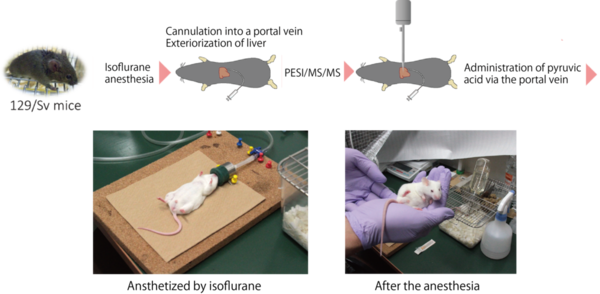Highlights
Highlights
Development of a novel in vivo real-time analysis by combining knowledge and skills
- Read in Japanese
- ツイート
- 2016/05/18
- Graduate School of Medicine
- Institute for Advanced Research
- Associate Prof. Kei Zaitsu
- Assistant Prof. Yumi Hayashi
Associate Prof. Kei Zaitsu and Assistant Prof. Yumi Hayashi are faculty members at the Graduate School of Medicine. They also belong to the Institute for Advanced Research, Nagoya University, and have recently successfully developed a new method for endogenous metabolite analysis.
The comprehensive analysis of metabolites, such as amino acids, organic acids, fatty acids, and sugars, requires extensive sample preparation, e.g., extraction and derivatization steps, prior to analysis using mass spectrometry. These steps may potentially cause bias, leading to misinterpretation of the final results; thus, sample preparation should ideally be excluded from metabolome analysis.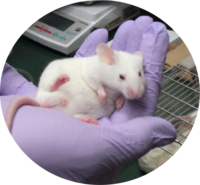 In collaboration with Shimadzu Corporation, the researchers developed a new analytical technique and demonstrated the first combination of probe electrospray ionization (PESI) with triple quadrupole tandem mass spectrometry (MS/MS). They were able to demonstrate that PESI/MS/MS enabled an intact analysis of endogenous metabolites in mouse liver without prior sample preparation. They also successfully achieved the in vivo real-time metabolome analysis using a mouse. This new methodology for metabolite analysis can potentially be expanded to directly investigate the metabolome state of living plants as well as animals.
In collaboration with Shimadzu Corporation, the researchers developed a new analytical technique and demonstrated the first combination of probe electrospray ionization (PESI) with triple quadrupole tandem mass spectrometry (MS/MS). They were able to demonstrate that PESI/MS/MS enabled an intact analysis of endogenous metabolites in mouse liver without prior sample preparation. They also successfully achieved the in vivo real-time metabolome analysis using a mouse. This new methodology for metabolite analysis can potentially be expanded to directly investigate the metabolome state of living plants as well as animals.
This research was published online in Analytical Chemistry on March 9, 2016.
The combination of professionals and the best equipment enables us to challenge impossibilities. Two young researchers’ research unit has succeeded the in vivo real-time metabolome analysis of animals.
"I took apprentice training with Assistant Prof. Hayashi."
Associate Prof. Kei Zaitsu and Assistant Prof. Yumi Hayashi at the Graduate School of Medicine and the Institute for Advanced Research, Nagoya University, are great research partners, having mutual professional respect. Associate Prof. Zaitsu's expertise lies in analytical techniques, while Assistant Prof. Hayashi has special strengths in the skills required for animal experiments. They have established a research unit that combines their knowledge and skills to develop new methodologies for endogenous metabolite analysis.
To highlight the originality of the research unit and to create a new research field, they named their laboratory “in vivo real-time omics.” Their primary research target is the development of comprehensive and real-time analysis of whole molecules in living organisms. They expect to obtain new findings that, until now, could only be inferred from fragmented information. In addition, a new definition regarding the life and death of creatures is expected to be revealed.
In their study, the research team in collaboration with Shimadzu Corporation developed a new analytical technique, PESI/MS/MS, by combining probe electrospray ionization (PESI) with triple quadrupole tandem mass spectrometry (MS/MS). With its direct and intact analysis of endogenous metabolites in living mice liver, the energy production system in living mice was successfully monitored. In addition to wide potential applications in animals, the research results have received much attention from researchers interested in studying living plants.
*******
—Combining each other’s strength, a research unit was launched.
“I was responsible for the analysis of the components of stimulants and drugs when I was at the forensics lab.”
Associate Prof. Zaitsu, whose specialty is analytical methods and techniques, honed his skills through his experience in the forensics lab.
During his career at the forensics lab, Associate Prof. Zaitsu studied temporarily with Prof. Eiichiro Fukusaki at Osaka University to learn further analytical techniques in metabolomics, which are widely used for biomarker detection, functional analysis, etc. “It was a great experience to challenge a new research world; at the same time, I found there was some benefit from my past experience at the forensics lab,” said Associate Prof. Zaitsu. As a result, he was able to expand his research interests to the metabolites found in living organisms.
Following his time at the forensics lab, he received an offer from Prof. Akira Ishii, Department of Legal Medicine and Bioethics, Graduate School of Medicine at Nagoya University, and moved to work at his current position. In order to develop accurate and efficient analytical techniques for metabolites detection, he started research in the field of in vivo real-time metabolome monitoring.
“However, I met a problem sooner or later when animal experiments were required to move on to the next stage in the research.”
Although animal experiments are necessary for in-vivo metabolome analysis, Associate Prof. Zaitsu had no experience with animal anatomy, nor had he withdrawn animals’ blood. He had, however, a great opportunity to see an animal experiment performed by Assistant Prof. Hayashi, Department of Pathophysiological Laboratory Sciences.
Associate Prof. Zaitsu was impressed with her anatomical technique on mice, and asked her to train him in whole animal anatomy.
During the training, they shared their own research interests through casual discussions, and decided to combine their professional skills to cope with their existing research difficulties. Then, at this particular timing, they obtained information about a program for young researchers that was designed to facilitate the establishment of research units to create and advance undeveloped fields.
—Originality was generated through a lateral approach.
 To apply for the research program, Associate Prof. Zaitsu and Assistant Prof. Hayashi had to specify a research style that would generate originality through a lateral approach towards metabolomics. The combination of their strengths in analytical techniques and animal experiments, meant they targeted in vivo real-time analysis, which could also be directed to each of their own research interests:
To apply for the research program, Associate Prof. Zaitsu and Assistant Prof. Hayashi had to specify a research style that would generate originality through a lateral approach towards metabolomics. The combination of their strengths in analytical techniques and animal experiments, meant they targeted in vivo real-time analysis, which could also be directed to each of their own research interests:
“I was wondering about the definition of death, from the standpoint of legal medicine.”
Associate Prof. Zaitsu has been looking for a definition for death since he was at the forensics lab. He expects that real-time analysis could reveal how death is caused, for example, does continuity stop suddenly? —Do bodily functions, such as those in the cardiopulmonary system and brain, gradually stop?
“I was concerned about time lag during the anatomy of animal experiments.”
Assistant Prof. Hayashi sees time lag as a problem. During the animal anatomy, a certain time has to be stopped for the experiment despite the continuity of time. In the analysis, this would misread the beginning of motion and/or the connection of such fragmental results. She desired real-time analysis to provide new insights and replace those currently based on fragmental results.
Real-time metabolite monitoring is also considered necessary in metabolomics, especially to deal with the analysis of metabolites caused by illness.
At present, sample preparation, such as the extraction of metabolites from living animals and subsequent derivatization, has been required before metabolite analysis. Sample preparation can lead to problems later in the analysis, as the degradation of metabolites can progress and the concentration of metabolites may generate bias. Therefore, sample preparation should be excluded from metabolome analysis, and ionization must be performed as soon as the metabolites are obtained from living organisms.
“We expected the potential development of PESI/MS/MS to perform real-time monitoring.”
Happily, their combined approach was approved to establish a new research unit. Immediately after that, they obtained information from Shimadzu Corporation that PESI/MS/MS prototype equipment had potentially been developed.
—Development of PESI/MS/MS
“In fact, I had asked Shimadzu Corporation about the potentiality of PESI/MS/MS development before I came to Nagoya University.”
PESI/MS/MS is an analytical technique combining probe electrospray ionization, PESI, and triple quadrupole tandem mass spectrometry, MS/MS (Figure 1).
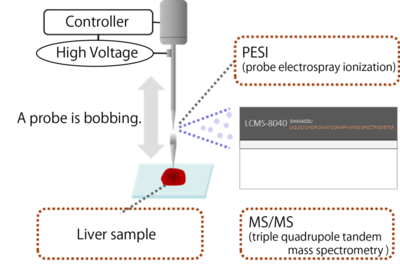 Figure 1. Schematic image of PESI/MS/MS (Figure: by courtesy of Associate Prof. Zaitsu)
Figure 1. Schematic image of PESI/MS/MS (Figure: by courtesy of Associate Prof. Zaitsu)
PESI is a new ionization method developed in 2007 by Prof. Kenzo Hiraoka at Yamanashi University. The PESI system enables users to obtain biogenic substances from a sample and directly ionizes them at high voltage; that is, sample preparation is not necessary. The PESI probe utilizes an acupuncture needle (dia. 700 nm) (Figure 2); therefore, samples can be electro-sprayed and ionized more effectively. Furthermore, the acupuncture needle performs intact analysis, and is able to directly obtain a small amount of biogenic substances from a sample.
 Figure 2. Acupuncture needle (dia. 700 nm) for PESI probe ※1 nm = 1/1000 mm
Figure 2. Acupuncture needle (dia. 700 nm) for PESI probe ※1 nm = 1/1000 mm
Some researchers have already combined PESI with single step mass spectrometry, MS, and developed PESI/MS to analyze biogenic substances in plant cells (Gong, et al. Anal. Chem., 2014, 86, 3809, Nakashima, et al. Anal. Chem., 2016, 88, 3049). However, because MS has low specificity in the identification of chemical compounds, Associate Prof. Zaitsu and Assistant Prof. Hayashi needed to combine PESI with tandem mass spectrometry, MS/MS, rather than MS, for their designated analysis.
Thereafter, Associate Prof. Zaitsu was contacted by Mr. Hiroshi Yamashita, the General Manager of Collaboration Promotion Department at Shimadzu Corporation, with the news that the “PESI/MS/MS prototype equipment is now ready to develop.” It was the right time for the research team to start developing the PESI/MS/MS method.
“It was prototype equipment, of which has a simply designed external switch button, rather than a completed one.”
During the early development of the PESI/MS/MS method, Associate Prof. Zaitsu and Assistant Prof. Hayashi went to Shimadzu Corporation in Kyoto every month. With Mr. Tasuku Murata, the Assistant Manager of Global Application Development Center at Shimadzu Corporation, they collected data and optimized the equipment.
Although they could obtain the expected data and things seemed to go smoothly, there were also many difficulties. For example, the time points used to inject the probe into a sample and to increase the voltage were an important issue: any problem in the developing equipment was unknown. To overcome these problems during data collection, the research team had several discussions and assessed the characteristic features of the equipment and the utility of the method by means of animal experiments.
 Sample insertion site of PESI/MS/MS
Sample insertion site of PESI/MS/MS
—Toward success in real-time monitoring
After further optimization of the PESI/MS/MS method, Associate Prof. Zaitsu and Assistant Prof. Hayashi finally identified 26 metabolites directly obtained from anatomized mouse liver.
Furthermore, they prepared five each of CCl4–induced hepatic injury model and control anatomized mice livers, and made a direct analysis of the metabolites using PESI/MS/MS. As expected, they could accurately detect the metabolite alteration between these two groups, and could successfully identify the chemical components by principal component analysis (Figure 3).
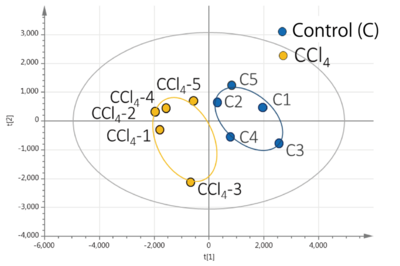 Figure 3. Results of principal component analysis (Figure: by courtesy of Associate Prof. Zaitsu)
Figure 3. Results of principal component analysis (Figure: by courtesy of Associate Prof. Zaitsu)
They also applied the novel method to living mouse liver, and examined real-time monitoring (Figure 4).
Figure 4. Experiemental process for real-time monitoring (Figure: by courtesy of Associate Prof. Zaitsu)
They targeted the tricarboxylic acid (TCA) cycle intermediates, fumaric acid and α-ketoglutaric acid, which play an important role in energy production in living cells.
It is well-known that pyruvic acid is able to permeate into the inner mitochondrial membrane in the cell matrix. Therefore, when pyruvic acid is injected into the hepatic portal vein, the TCA cycle can be immediately activated, and hepatic levels of the fumaric and α-ketoglutaric acids can increase considerably (Figure 5a).
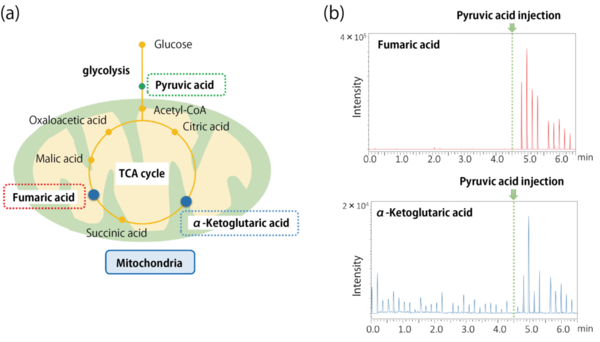 Figure 5. (a) Schematic image of TCA cycle, and (b) hepatic levels of the fumaric and α-ketoglutaric acids after pyruvic acid injection (monitoring time at 4.5 min) (Figure: by courtesy of Associate Prof. Zaitsu)
Figure 5. (a) Schematic image of TCA cycle, and (b) hepatic levels of the fumaric and α-ketoglutaric acids after pyruvic acid injection (monitoring time at 4.5 min) (Figure: by courtesy of Associate Prof. Zaitsu)
“As we expected, immediately after the injection of pyruvic acid, the intensity of both fumaric and α-ketoglutaric acids showed a peak.”
Associate Prof. Zaitsu and Assistant Prof. Hayashi were excited by the results (Figure 5b).
In fact, this simple and important result garnered attention from researchers all over the world. As for the future, the research team is now focusing their attention on the practical development of PESI/MS/MS so that it will become available in a wide range of research scenes.
*******
“We could make a new challenge with the combination.”
Associate Prof. Zaitsu and Assistant Prof. Hayashi formed a research unit by strengthening each other’s specialty. Combining also PESI and MS/MS, hitherto impossible challenges could turn out to be possible.
In metabolomics, despite the highly competitive research field, the researchers could bring originality to their research as they set an unreached (at that time) but clear goal for real-time monitoring. One of their research achievements, i.e., the development of PESI/MS/MS, is expected to visualize all living creatures’ invisible internal worlds.
In fact, the invisible TCA cycle is now clearly to be seen.
—Owing to the real-time monitoring, we would envisage more clarity about what is currently invisible to science.
(Ayako Umemura)
Researchers featured in this article
Dr. Kei Zaitsu【Associate Professor, Graduate School of Medicine, Nagoya University】
 Dr. Zaitsu graduated from the Department of Chemical Engineering and Materials Science, Doshisha University in 2002. Although he continued to study in the master’s course, he left in 2003 and began work as a researcher at the Forensic Science Laboratory of Osaka Prefectural Police Headquarters, where he remained until 2012. In 2013, he moved to the Graduate School of Medicine, Nagoya University, as an Associate Professor. In addition to this role, he established a research unit with Dr. Hayashi in October 2014 and has become an Associate Professor at the Institute for Advanced Research at Nagoya University. He has also been employed as a part-time lecturer at Osaka Medical College since 2013, and at the Faculty of Life and Medical Sciences at Doshisha University since 2015.
Dr. Zaitsu graduated from the Department of Chemical Engineering and Materials Science, Doshisha University in 2002. Although he continued to study in the master’s course, he left in 2003 and began work as a researcher at the Forensic Science Laboratory of Osaka Prefectural Police Headquarters, where he remained until 2012. In 2013, he moved to the Graduate School of Medicine, Nagoya University, as an Associate Professor. In addition to this role, he established a research unit with Dr. Hayashi in October 2014 and has become an Associate Professor at the Institute for Advanced Research at Nagoya University. He has also been employed as a part-time lecturer at Osaka Medical College since 2013, and at the Faculty of Life and Medical Sciences at Doshisha University since 2015.
(Photo: His favorite Fender Eric Clapton model Stratocaster)
***
Dr. Zaitsu owns seven guitars. “I adore Eric Clapton and I seriously wanted to be a professional guitar player,” said Dr. Zaitsu. In addition, he explains that he sees a common professionalism between guitar-play and research in his immersed personality. He is likely to concentrate on one thing until he can execute it like an expert.
During the interview, I was excited about the atmosphere of their laboratory, which was like a music venue. I imagine that they are producing research results that are equally exciting. I look forward to following their further research achievements and developments (by AU)
Dr. Yumi Hayashi【Assistant Professor, Graduate School of Medicine, Nagoya University】
 Dr. Hayashi completed her master’s course in 2009 and her doctoral course in 2012 at the Graduate School of Medicine, Nagoya University. After she obtained her Ph.D. in medicine, she started working as an Assistant Professor at the Department of Radiological and Medical Laboratory Sciences, Graduate School of Medicine at Nagoya University. Since December 2014, she also works at the Institute for Advanced Research at Nagoya University with Dr. Zaitsu.
Dr. Hayashi completed her master’s course in 2009 and her doctoral course in 2012 at the Graduate School of Medicine, Nagoya University. After she obtained her Ph.D. in medicine, she started working as an Assistant Professor at the Department of Radiological and Medical Laboratory Sciences, Graduate School of Medicine at Nagoya University. Since December 2014, she also works at the Institute for Advanced Research at Nagoya University with Dr. Zaitsu.
(Photo: Animal figures which live on her desk)
***
“I like animals a lot,” says Dr. Hayashi. She cherishes the animals that must, necessarily, be used in her research and always keeps in her mind that she appreciates the life of animals. The skills she applies in her animal experiments, many of which involve great manual dexterity, are improved with the view that the animals should be treated respectfully.
During the interview, she showed me how she can quickly fold a tiny candy package with her deft fingers. Sure enough, I expect that the research unit will achieve their next future goals also by combining their knowledge and skills (by AU)
Links
- Graduate School of Medicine HP http://www.med.nagoya-u.ac.jp/english01/index.html
- Department of Legal Medicine and Bioethics, Graduate School of Medicine HP http://www.med.nagoya-u.ac.jp/legal/
- Department of Pathophysiological Laboratory Sciences , Graduate School of Medicine HP http://square.umin.ac.jp/NU_patho/
- Nagoya University's Program for Promoting the Enhancement of Research Universities HP http://aip-nagoya.com/ru/english/index.html
- Shimadzu Corporation HP http://www.shimadzu.com/
- Link to this article (from a search-result)
http://pubs.acs.org/doi/ipdf/10.1021/acs.analchem.5b04046
Kei Zaitsu, Yumi Hayashi, Tasuku Murata, Tomomi Ohara, Kenta Nakagiri, Maiko Kusano, Hirokki Nakajima, Tamie Nakajima, Tetsuya Ishikawa, Hitoshi Tsuchihashi, and Akira Ishii.
Intact endogenous metabolite analysis of mice liver by probe electrospray ionization/triple quadrupole tandem mass spectrometry (PESI/MS/MS) and its preliminary application to in vivo real-time analysis.
Analytical Chemistry 88: 3556-3561 (2016).
(First published on March 9, 2016; doi: 10.1021/acs.analchem.5b04046)
NU Research
(English)




